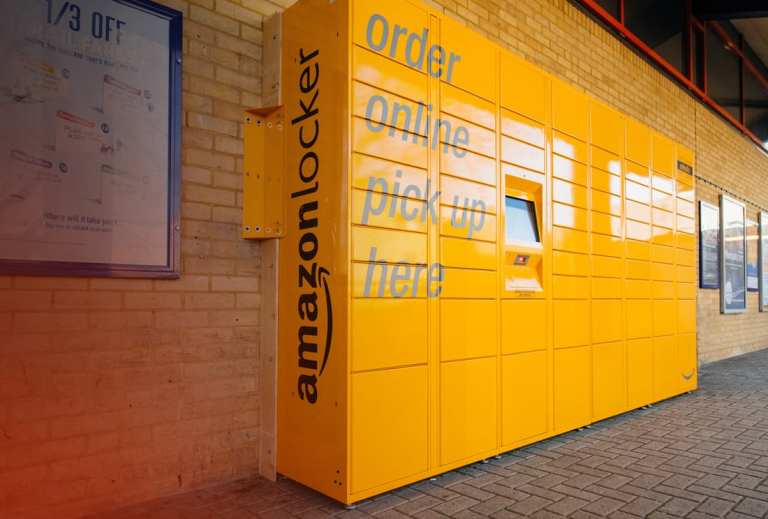
Automated retail is bifurcated between in-store, brick and mortar efforts as seen with Amazon Go and on the opposite end of the spectrum, cabinets. Worldnet CEO and Co-Founder Will Byrne tells Karen Webster that the rise of self-checkout, kiosks and smart vending can fuel a new business model via intelligent cabinets, tailored to new retail settings and use cases.
The headlines may center on Amazon Go, on the move to cashless retail in the brick-and-mortar realm. The self-serve model has customers roving aisles dotted with sensors and scanners, with the hope (by retailers) that seamless transactions and higher turnover are the result.
The rise of automated retail can be seen as being bifurcated between two buckets, chiefly through the kiosks or intelligent cabinets that sell a range of items, and through a succession of purchases via the Amazon Go model.
Might one strategy have advantages over the other?
In a recent PYMNTS interview with Karen Webster, Worldnet CEO and Co-Founder Will Byrne championed the intelligent cabinet model, noting its ability to serve consumers with speed, a small physical footprint and customization.
As Byrne clarified, the models boil down to scale and the costs related to gaining scale.
The Amazon Go model, he told Webster, exists as a “large-scale retail play with significant overhead costs in terms of location … and the deployment of technology.” He noted that as of this writing, Amazon had launched only 13 Amazon Go retail stores, which serves as evidence of those considerable and aforementioned costs.
“It’s a major play in terms of finding the right location,” he told Webster of the hunt for suitable brick-and-mortar presence. “And it has to be a large-scale location. The real advantage, to me, of the cabinet-based solution is that it is a new business model in its own right.”
The Advantage of the Cabinet Model
Byrne maintained that cabinet-based solutions can be deployed with relative ease in new retailing environments and in existing ones, too. The cabinets’ offerings can also be tailored, he said, to specialized customer bases that might exist, say, in a college setting, near pharmacy locations or in-office environments.
“They all have different use cases with a different product set that is tailored specifically for the environment,” he said of the above scenarios, adding that “each of these applications has validity in its own right,” and can extend even into high-end luxury products, which can boost the average transaction value significantly. That’s a step up from traditional vending machines, Byrne said, where “it’s very difficult to make a profit on a two- or three-dollar transaction” as would be spent on soda or chips.
The cabinet model also has an operating cost advantage over traditional retail venues, he said, as pharmacies like Walgreens must maintain staff on hand to stock shelves — and maneuver among those shelves when hard to find (or reach) items are demanded by consumers. Small items such as cosmetics are also difficult to secure in a traditional retail environment, said Byrne.
Byrne also said that advantages lie with the newest forms of automated retail not just in higher ticket value and increased security but with increased customer loyalty — “and that is something that all retailers are looking for,” he stressed. “All businesses are looking for recurring transactions and the ability to be able to develop loyalty programs.” Those programs come with the ability to offer free registration of card details on site and recognition of individuals (and tailor offers) based on retina or thumbprint recognition. Enhanced loyalty programs also have the added benefit of cutting down on paper and plastic cards.
The Promise of Cashless
While the promise of cashless payments at the kiosk and the cabinet may be large, the penetration thus far is small. As noted during the discussion between Byrne and Webster, only one quarter of the machines accept cashless payments.
Part of that low penetration can be traced to legacy systems. Byrne said there exists a need to differentiate between traditional vending machines and the new generation of automated retail offerings that are decidedly more high-tech. The existing installed base, marked by coin and dollar bill dispensers, has its own issues around conversion, card payments and certainly contactless (tech) conversions, said the executive.
The technology upgrades are underway, but will be completed over the long term, while concurrently cabinets are being designed and built that have cashless functionality already in place. And, he added, there always will be a place for (and revenue stream from) standalone vending machines, in settings as far-flung as stadiums and subways.
Byrne said his own firm has been working with the companies that produce these automated machines, and the challenge centers on the use of software, and intelligent features of that software, to make transactions tailored and intuitive.
An Industry in Infancy
Amid the upgrades and the flexibility of the deployments (in terms of offerings and environments), Byrne said, automated retail exists in its infancy, though progress has been rapid. And progress will continue to progress where tens of thousands of devices are likely to be in the field and operating over the very near term.
Part of the tailwind will come from another leg of the automated retail experience, one with which many shoppers may be intimately familiar: the self-checkout experience. In many retail settings, observed Webster, a growing number of lanes are being converted to self-checkout. Byrne said incremental familiarity with that experience may drive comfort in making purchases at automated cabinets.
“Consumers have already voted and they’re voting with their feet,” he said. “I think you will see a very significant uplift in the visibility of automated retail over the coming 12 to 18 months. And then, in a parallel world, I think you’ll also see a significant move in the traditional vending machines away from cash and going toward other types of payments.”